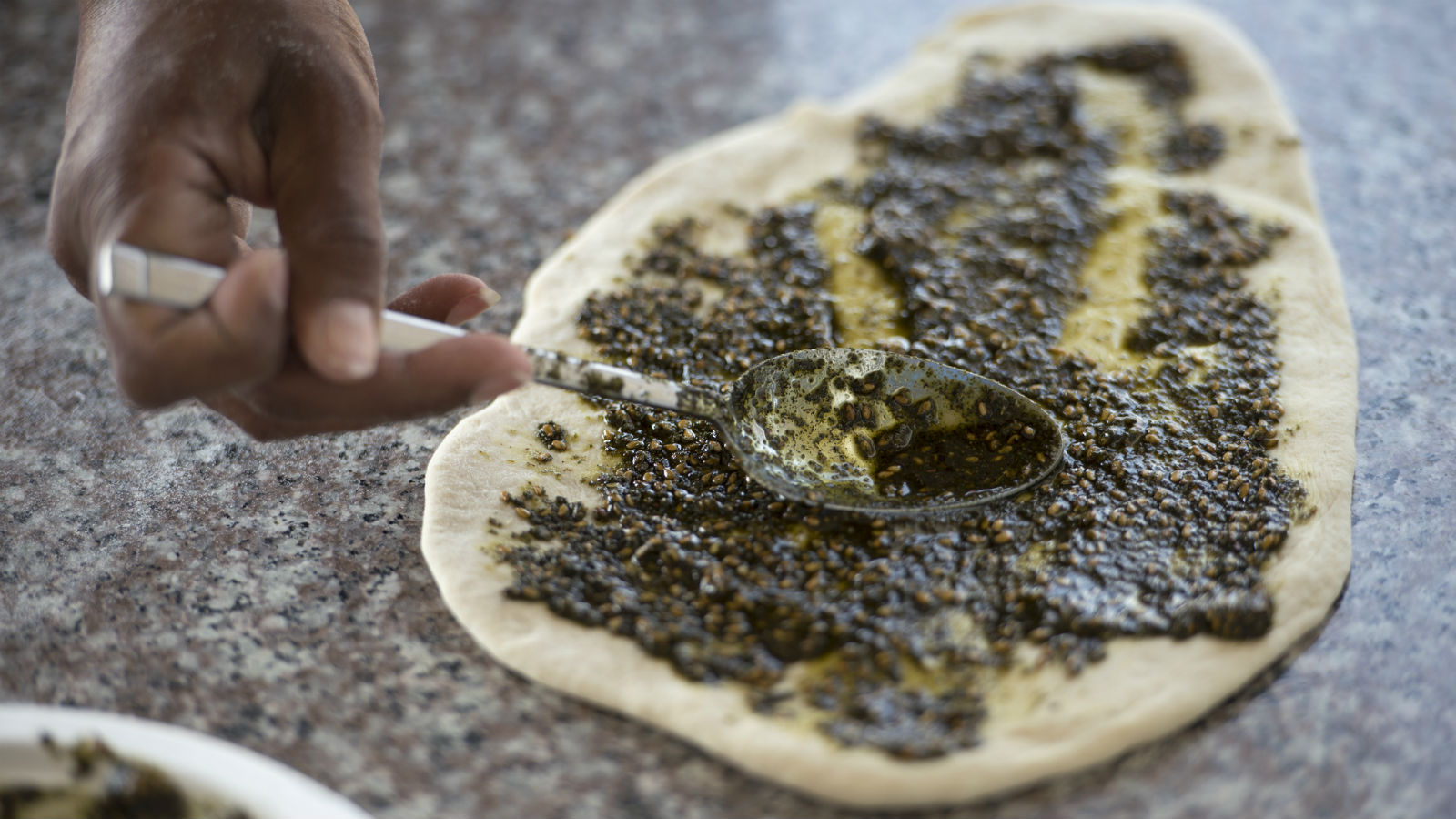Za’atar
A popular Israeli herb that can be traced back to the Bible.
Za’atar is the Arabic name for an herb blend that is ubiquitous in Israeli cooking. Traditionally, the blend was made from a plant by the same name, but today most za’atar blends are made from herbs like oregano, marjoram, and thyme–and don’t actually contain any of the “real” za’atar herb. This is because the za’atar plant is a protected species, and at certain times of year Israel does not allow people to harvest it, for fear it will become extinct.This plant that Israel seeks to preserve can be traced all the way back to the Bible, where it is call eizov (often translated as hyssop, though biblical hyssop was something different from the plant that today we call hyssop). In the Bible, eizov has many uses. Probably due to its antibacterial, antifungal, and antimicrobial properties, it is part of rituals for cleansing lepers (Leviticus 14:1-6) and purifying those who have come in contact with the dead (Numbers 19:5-6). Israelites, according to the Torah (Exodus 12:22), also used eizov back as their days in Egypt, when they employed sprigs of it to sprinkle lamb’s blood on their doors to be spared the death of their firstborn sons.
Current uses of what we now call za’atar are mostly culinary, but still diverse. The seasoning mixture is comprised of dried herbs, toasted sesame seeds, ground sumac, and salt. Sumac is another Middle Eastern flavoring, characterized by its deep red berries and often sold dried and ground into a coarse powder with a tart, cranberry-like flavor. In lieu of sumac, I have seen za’atar made with citric acid powder and dried lemon zest. Lemon thyme can also add that sour accent.
For breakfast, Israelis sprinkle za’atar mixture on pita drizzled with olive oil, or stir it into the yogurt cheese known as labane. Joan Nathan, in her book The Foods of Israel Today, adds za’atar seasoning mix to spinach turnovers and pita pizza, both great dishes for lunch or a snack. For a savory supper, the mixture can be used as a dry rub for fish or chicken, or added to marinades for grilled or roasted vegetables. Za’atar seasoning can even go festive in a party dip. Start with that labneh and za’atar combination, then add fresh garlic, feta cheese, and olive oil. Puree in a food processor, allow to chill for a few hours, and serve with pita chips and vegetable crudites.
You can find a za’atar blend at most Middle Eastern grocery stores. Or you can join a Middle Eastern tradition by making it from scratch.
Adapted from The Foods of Israel Today, by Joan Nathan.
Ingredients
Fresh thyme from your garden, farmers market, or grocery store
1/4 cup sesame seeds, lightly toasted
1/2 teaspoon sea salt (optional)
2 Tablespoons dried sumac, ground (available at Middle Eastern grocery stores)
Directions
Hang thyme or lemon thyme in small bunches in a cool, dry place or inside a paper bag, then allow to dry for two to three weeks. When the leaves are completely dry, strip them from each hardy stem. Crush to release the oils, and crumble by hand or in a spice grinder.
Combine with all the other ingredients in a small bowl. Mix well. Taste and adjust ingredient proportions to your liking. Store in a well-sealed spice jar or plastic bag in a cool, dry place. Keeps for several months.
Torah
Pronunced: TORE-uh, Origin: Hebrew, the Five Books of Moses.



